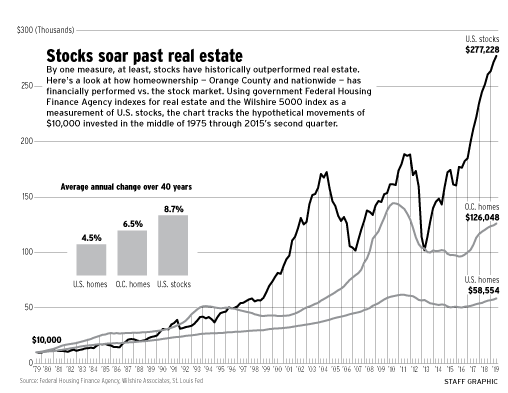Balance Sheet Model This balance sheet model provides the basis for building your company’s balance sheet, which shows your total assets, liabilities, and net worth. A balance sheet is a type of financial statement that describes specific business assets and liabilities in addition to equity on a specific day. The balance sheet is part of your company’s balance sheet, which also includes an income statement, a statement of equity, and a statement of cash flows.
The balance sheet is a statement of cash flows that reflects the assets, liabilities and equity of a company at a certain point in time and which serves as the basis for calculating the rate of return and assessing its capital structure. The balance sheet summarizes the assets, equity and liabilities of an organization or individuals at a particular point in time. The financial statements (also known as the statement of financial position) reflect the assets, liabilities and equity of the company at the end of the reporting period.
In financial accounting, a balance sheet (also known as a balance sheet or financial statement) is a summary of the financial balance sheets of an individual or organization, whether it be a sole proprietorship, partnership, corporation, limited liability company, or other entity such as a government or non-profit institution, individual, or organization. Financial statements provide information about a company’s resources (assets) and its sources of capital (equity and liabilities/debt) of a company. The balance sheet shows the total assets of a company and how those assets are funded by debt or equity.
Another way to look at the accounting equation is that total assets equal liabilities plus equity. On the other hand, the equation emphasizes that a company’s equity always equals equity (assets minus liabilities). An increase in either is inevitably accompanied by an increase in the other, and the only way to increase capital is to increase capital.
For example, if a company takes a $4,000 five-year loan from a bank, its assets (especially the cash account) will increase by $4,000. His liabilities (especially his long-term debt account) will also increase by $4,000, balancing both sides of the equation. The Accounting Department will increase the cash portion of the assets by Rs 500,000 while increasing the long-term debt account by Rs 5, thereby balancing the two parties. For example, if a company pays $40 to one of the company’s business creditors, the cash balance will decrease by $40 and the outstanding account balance will decrease by the same amount.
Understanding the Balance Sheet
The Balance Sheet provides an overview of a business’s financial positions. A balance sheet can be for a sole proprietorship, business partnership, corporation, private limited company, or any other organization, including a government or a not-for-profit. Let’s explore each of these categories. Once you understand the purpose of each, you can better understand the various components of a balance sheet. In this article, we’ll discuss some of the most common components and the differences between each.
Intangible assets
Intangible assets are intangible, non-tangible, and immaterial assets. They cannot be touched, and therefore cannot be immediately converted into cash. Intangible assets include goodwill, customer lists, brand names, and government licenses. While these assets do not have a short life cycle, they can still be used by other companies and need to be recorded on the balance sheet. To account for them properly, companies must first amortize them on their income statement.
Many companies report intangible assets at a value that is far below their true worth. In most cases, the reported value is the cost less amortization. Development costs are often small in comparison to the actual value of the right. Moreover, the reported amount does not reflect a fair value because this valuation is subjective and subject to change quickly. Despite the fact that companies pay a lot for intangible assets, they may be worth far less than their actual worth. It is therefore important to assign a fair value to identifiable subsidiary intangible assets.
Intangible assets have legal rights, which are enforceable in a Court of Law. However, this does not necessarily mean that the company has control over the asset, as it can be controlled in a variety of other ways. Another example of an intangible asset is goodwill, which represents a buyer’s willingness to pay more than the value of individual assets. For example, XYZ Company paid $50 million for a sporting goods business. Goodwill is only recorded on a balance sheet if the company bought a similar business. Similarly, government grants are intangible assets. But these grants are treated differently.
The value of intangible assets varies by company. A copywriter, for example, could acquire a license for the software needed to run his business. Another example of an intangible asset is a customer list. This list can help a company target potential clients and increase profits. Companies often buy such lists from other companies for their customer lists. Intangible assets are not necessarily tangible, so they are only added to the balance sheet when they are purchased.
Fixed assets
What is a fixed asset on the balance sheet? Fixed assets are tangible items owned by a business. These assets may include buildings, equipment, and furniture. Also included are leasehold improvements, which are upgrades a tenant makes to the property. This amount is known as accumulated depreciation. Depreciation is the amount of money a business spends on these assets over the life of the lease. When subtracting depreciation, the net amount is known as the true value of the fixed asset.
As mentioned, the terms “fixed asset” and “inventory” are not the same for every type of company. For example, a delivery company would classify its vehicles as fixed assets, while a manufacturing firm would classify them as inventory. Rather than looking for a universal definition, a business should consider the nature of its operations before categorizing assets. Here are some examples of fixed assets:
Fixed assets are long-term, tangible resources a business has that are used to operate its operations. While they will not be consumed or sold in the current accounting year, they are valued based on their estimated useful life. These assets are typically classified under Property, Plant, and Long-Term Assets on a company’s Balance Sheet. While the value of a company’s fixed assets will fluctuate over time, the cost of these assets is typically two to four times the annual sales revenue of the business.
A business must maintain a fixed asset list in order to properly prepare its balance sheet. Fixed assets can range from equipment to real estate. If these assets are not in the balance sheet, it can affect the company’s overall financial health. This information is essential in forecasting growth and identifying issues before they become out of control. For instance, the accountant should monitor the condition of these assets to determine if any are draining the company’s assets.
Long-term debt
There are two basic types of long-term debt. The first is debt that matures over many years, such as a 30-year bond. The second type is debt that a company issues. In either case, the company reports the “current portion” of its long-term debt on its balance sheet, which represents the amount of debt that will be due in the coming year. However, the company does not plan to pay off the entire principal amount over the long-term debt, which would be reported in the current liabilities section of the balance sheet.
Long-term debt is any outstanding debt that has a maturity date of more than 12 months. These debts are listed on a company’s balance sheet as non-current liabilities. In addition to being classified as long-term debt, interest on long-term debt is charged on a percentage of the outstanding principal amount. Therefore, the lower the interest rate, the better for the company. This is why it is so important for financial analysts to know how long-term debt works.
GE Capital’s long-term debt as of 31 January 2019 is $43,714 million. This is almost the same as what it was on 31 January 2019. However, the current portion of long-term debt has grown from $1,876 million to $5,362 million. In addition to understanding how long-term debt works, investors should be aware of the structure and purpose of the company’s long-term debt.
Long-term debt is the amount of debt a company has outstanding that has a longer maturity than the company’s current debt. It provides financial leverage and helps a company cover its expenses, but too much of this type can cause problems in the long-term. When a company has too much of this type of debt, the management should pay off the debt as quickly as possible, but not before the current liabilities are covered by cash flow.
Shareholder equity
If you’re not sure how to read a balance sheet, you need to understand what shareholders equity is and what it means. Shareholder equity is the amount of money invested in a company by its owners. This money is then returned to them in the event of the company’s liquidation, once all its debts have been paid off. A balance sheet should show all of the company’s assets and liabilities, and the shareholders’ equity will be the value of the remaining money after all the debts are paid.
The amount of shareholders’ equity is calculated by subtracting the par value of a share from its market value. A company can issue additional stock to pay off its debts or reduce its interest costs. In addition to stock repurchases, companies can issue new shares to expand their capital base. If a company issues new stock, this will increase the value of the shares. But, it can also reduce the value of the stock holders’ equity by issuing new shares.
Another component of shareholders’ equity is retained earnings. These earnings are the profits that a company hasn’t distributed to its shareholders. This money is recorded underneath Shareholders’ Equity, and is closed out after each period. A company can increase its stockholders’ equity by raising prices or by reducing management personnel. The company will have more cash to use for expansion and productivity. This equity also gives the company more freedom to absorb unexpected losses and reduce the need for additional debt.
There are two types of assets on a balance sheet: long-term assets and current liabilities. Long-term assets are those that the company owns for a long period of time. A company’s assets and liabilities should be equal to its total liabilities plus stockholders’ equity. The total assets and liabilities are listed on a balance sheet. The company’s stockholders’ equity will be the next line item listed on the balance sheet.
Financial ratios
Using Financial Ratios on the Balance Sheet can help you make informed decisions about your business. Financial ratios are derived from the numerical values of the company’s income statement, cash flow statement, and balance sheet. These figures are used to perform quantitative analysis and evaluate a company’s liquidity, leverage, growth, and profitability. Financial ratios can help you spot trends within a company or industry. A high ratio of debt-to-assets may indicate that a company is overburdened with debt and faces a high default risk.
The highest debt ratio in the balance sheet indicates that a company is using debt and leverage to fund its growth. This makes the company liable to repay the debt as well as interest. It is important to know if the returns generated by a company outweigh the cost of debt. Financial ratios that measure activity show the efficiency of a company in converting assets into cash. Using these ratios can help you determine whether a company is efficient and effective.
Financial ratios on the balance sheet are particularly useful when they are benchmarked against something. Financial ratios aren’t directly comparable between different industries because the risk factors, capital requirements, and competition differ. Likewise, comparing performance against similar companies may be more informative. For example, a company may use a different metric to measure its productivity than a similar firm. Using the same ratios for similar businesses can help you determine how well the business is doing.
The quick ratio, also known as the liquid assets-to-current liabilities (L/C), is one of the most important ratios on the balance sheet. The quick ratio should be less than 1:1, as inventory can take time to convert into liquid assets. If the quick ratio is higher than that, the company may have a poor collection program for accounts receivables and an excessive reliance on inventory. A high cash to total assets ratio, however, may indicate a company that should consider raising short-term funds for growth.
To calculate the debt-to-equity ratio, divide a company’s total debt by its equity, or the inventory turnover ratio, which compares a company’s cost of sales in profit or loss to the average inventory balance for the period. To calculate a company’s P/E ratio, divide the price of the company’s stock by the company’s earnings per share, or working capital, which is the company’s repayment of its current liabilities (i.e., its debt one year after a reporting date). date) from their working capital. Net Fixed Assets consists of Fixed Assets Amount Less Accumulated Depreciation. A company’s working capital cycle is the time it takes to convert total net working capital (current assets minus current yield – financial statements can be used) to assess whether the company generates profit.
Join The Professional Stock Investing (PSI)™
Learn How to Develop a Million Dollar Stock Portfolio
On the Professional Stock Investing, you will learn:
- Invest in Winning Stocks That Generate High Double-Digit Returns
- Identify Market Uptrends and Downtrends Accurately
- Hedge and Protect Your Portfolio from Market Crashes
- Manage Your Risks and Maximize Your Returns
- Develop the Psychology of a Disciplined Investor
- Build a Winning Portfolio That Suits Your Investment Goals
Helpful Links:
Homepage
About
Contact
Personal Development Partner




